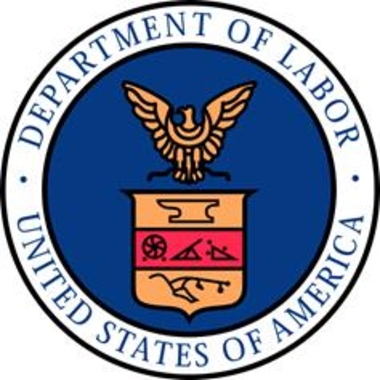Hiring slowdown: US employers added just 126K jobs in March

Washington (AP) — A weakening U.S. economy spilled into the job market in March as employers added just 126,000 jobs — the fewest since December 2013 — snapping a 12-month streak of gains above 200,000.
The unemployment rate remained at 5.5 percent, the Labor Department said in its monthly report Friday.
The March jobs data raised uncertainties about the world's largest economy, which for months has been the envy of other industrialized nations for its steadily robust hiring and growth. Employers now appear wary about the economy, especially as a strong dollar has slowed U.S. exports, home sales have sputtered and cheaper gasoline has yet to unleash more consumer spending.
Some of the weakness may prove temporary: An unseasonably cold March followed a brutal winter that slowed key sectors of the economy.
Last month's subpar job growth could make the Federal Reserve less likely to start raising interest rates from record lows in June, as some have been anticipating. The Fed may decide that the economy still needs the benefit of low borrowing costs to generate healthy growth.
Reflecting that sentiment, government bond yields fell Friday. The yield on the U.S. 10-year Treasury note dropped to 1.84 percent from 1.90 percent before the jobs report was released. U.S. stock markets are closed in observance of Good Friday.
Economists noted that for months hiring had been stronger than other gauges of the economy, suggesting that a pullback in job gains was inevitable.
"Job growth has been running at a stupendous pace in America over the last several months, increasingly out of tune with other economic indicators, which have pointed to a slowdown," James Marple, senior economist at TD Economics, wrote in a research note. "The reckoning in March closes at least some of this gap.'"
At the same time, some said last month's data looks bleak in part because hiring had been so robust in the months that preceded it.
"Employers aren't laying people off," noted Patrick O'Keefe, director of economic research at the accounting and consulting firm CohnReznick. "What they've decided to do is slow down the pace at which they're hiring until they have more confidence."
Last month, the manufacturing, building and government sectors all shed workers. Factories cut 1,000, snapping a 19-month hiring streak. Construction jobs also fell by 1,000, the first drop in 15 months. Hiring at restaurants plunged from February. The mining and logging sector, which includes oil drilling, lost 11,000.
Some other categories showed continued gains. Health care added 22,000 workers. Professional and business services — a sector that includes lawyers, engineers, accountants and office temps — gained 40,000. Financial services expanded by 8,000, and retailers maintained their 12-month pace by adding 25,900.
In addition to reporting sluggish hiring for March, the government revised down its estimate of job gains in February and January by a combined 69,000.
Wage growth in March remained modest. Average hourly wages rose 7 cents to $24.86 an hour. That marked a year-over-year pay increase of just 2.1 percent. But because average hours worked fell in March for the first time in 15 months, Americans actually earned less on average than they did in February. Tepid pay increases have been a drag on the economy since the Great Recession ended nearly six years ago.
Many Americans remain out of the labor force, partly because many baby boomers are reaching retirement age. The percentage of Americans who are either working or looking for work fell in March to 62.7 percent, tying the lowest such rate since 1978.
Job growth had been healthy for more than a year before March. Yet the streak of strong hiring, along with cheaper gasoline, hasn't significantly boosted consumer spending.
The Fed signaled last month that it would be cautious in raising rates from record lows. The Fed has yet to rule out a June rate hike. But many analysts expect the first increase no earlier than September. In part, that's because Fed officials have revised down the range of unemployment they view as consistent with a healthy economy to 5 percent to 5.2 percent from 5.2 percent to 5.5 percent previously. The weak hiring last month could give them further pause about a June rate hike.
"I think (June) is completely off the table," said Carl Tannenbaum, chief economist at the financial services company Northern Trust.
The Fed won't likely raise rates until it sees evidence of consistently solid growth. But the economy has weakened in the first two months of 2015, in part because of the tough winter.
Cheaper oil has led energy companies to halt orders for pipelines and equipment, hurting manufacturers. At the same time, the strengthening dollar has made American-made goods costlier abroad, thereby cutting into exports.
This year's job growth has yet to ignite a larger boom in consumer spending. McDonald's, Wal-Mart, the Gap and other major employers have announced raises for their lowest-paid employees. But those pay raises are staggered and unlikely to fuel faster wage growth.
The economy has disproportionately added lower-paying jobs in the retail and restaurant sectors since the economic recovery began in mid-2009. Adding jobs in the lowest-paid industries can suppress average hourly wages, even when employers are rewarding cashiers, waiters and sales clerks with pay bumps.
By Josh Boak, AP Economics Writer. Copyright 2015 The Associated Press. All rights reserved. This material may not be published, broadcast, rewritten or redistributed.
The Gayly – April 3, 2015 @ 11:30am.





